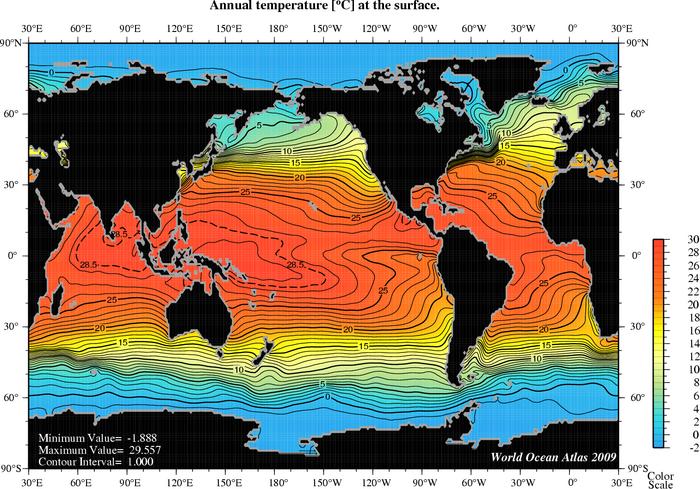Aqui, trazemos uma relação de fontes de diferentes tipos de dados. A maneira como este tutorial foi organizado segue alguns dos maiores problemas relacionados à cobertura ambiental, tais como mudança climática, desmatamento, falta de água, entre muitos outros.
Introdução
Jornalistas e pessoas que visualizam dados não podem se queixar da falta de recursos nos assuntos ambientais. Devido a anos de pesquisa científica e décadas de observação da Terra, conjuntos de dados estão disponíveis aos montes e na maioria das vezes em formato aberto.
Aqui, trazemos uma relação de fontes de diferentes tipos de dados. A maneira como este tutorial foi organizado segue alguns dos maiores problemas relacionados à cobertura ambiental, tais como mudança climática, desmatamento, falta de água, entre muitos outros. Nós também indicamos os tutoriais que sugerimos se você quer utilizar, mapear e visualizar esses dados.
Incêndios diários
Pixels indicando incêndio ou lugares quentes em todo o mundo são monitorados pelos satélites da Nasa. No site de Dados da Terra da Nasa, você vai encontrar o link para o projeto FIRMS (Sistema de Informação de Incêndio para Gestão de Recursos, do inglês Fire Information for Resource Management System). Ali você tem acesso a links para arquivos CSV, Shapefiles (SHP), KML (formato Google Earth) e Webservices, cobrindo as últimas 24, 48 e 72 horas.
Uma boa maneira de acompanhar os incêndios de florestas na sua área de interesse é assinar para receber os e-mails de alerta.
Para conjuntos maiores de dados, que cubram diversos dias, meses e até mesmo anos de incêndios, você pode utilizar a ferramenta de download também disponível no site.
Este é um exemplo do que você pode fazer com esses conjuntos de dados quando mapeia as informações. Há tanto informação de pixel de incêndio durante o mês de julho na América do Sul, quanto uma análise de incêndios maiores desde 2000.
Áreas protegidas
Limites de Parques Nacionais, reservas e territórios indígenas são essenciais na criação de um mapa ou para contextualizar uma reportagem ambiental. A melhor fonte para esse tipo de dado é o site Protected Planet, produzido pela Comissão Mundial de Áreas Protegidas, um braço das Nações Unidas.
Lá você pode também baixar arquivos SCV, SHP e KML com as fronteiras de praticamente todas as áreas protegidas do planeta. Há também informação sobre as espécies existentes nessas áreas e a situação de conservação, se estão ameaçados ou não de extinção.
Esse é o tipo de mapa que você pode fazer subindo um arquivo KML no Google Maps, por exemplo.
Dados sobre a situação do Ártico e da Antártida
Devido às mudanças climáticas, muita atenção tem sido dada à situação dos ambientes de gelo do planeta, a chamada criosfera.
O Centro Nacional de Dados de Neve e Gelo (National Snow and Ice Data Center – NSIDC) fornece planilhas, tabelas, arquivos KML e shapefile que permitem visualização fácil e análise de dados da extensão o gelo marítimo no Ártico ou as camadas de gelo na Antártida.
Os downloads estão bem explicados na página de Índice de Gelo Marítimo (Sea Ice Index)
Uma boa maneira de usar esses dados é criar um Google Earth Tour como este que segue
Emissões de GEE em níveis nacionais
A Convenção-Quadro sobre Mudança do Clima das Nações Unidas (UNFCCC) recebe dos governos dados oficiais sobre as emissões do gases de efeito estufa (GEE).
Os dados podem ser encontrados na seção GHG Data. do site. Há informações sobre poluentes específicos, tais como:
CO2 – Dióxido de carbono
CH4 – Metano
N20 – Óxido nitroso
PFCs – Perfluorcabonetos
HFCs – Hidrofluorcarbonos
SF6 – Hexafluoreto de enxofre
Há também dados de gases de efeito estufa indiretos, como o Dióxido de Enxofre (SO2), Óxidos de Nitrogênio (NOx), Monóxido de Carbono (CO) e compostos orgânicos voláteis não metânicos (COVNM).
Os dados são fornecidos em arquivos XLXs com valores divididos por país signatário da Convenção. O formato permite que você crie gráficos simples para posicionar os maiores emissores, como este:
Florestas e desmatamento
Alguns dos melhores dados reunidos sobre florestas e recursos florestais podem ser encontrados no site da Organização das Nações Unidas para Alimentação e Agricultura (FAO). A cada cinco anos, eles publicam o relatório “Avaliação Global dos Recursos Florestais” e também mantém a página de estatísticas atualizada (FAOSTAT) em relação ao comércio e produção de produtos florestais, permitindo que o usuário personalize as tabelas que queira baixar.
No exemplo abaixo, você pode ver um mapa temático simples feito com o Google Spreadsheet utilizando os números da avaliação global de 2010. Aqui estamos mostrando os países com cores conforme o tamanho das áreas florestais.
Oceanos
A Administração Nacional de Oceanos e Atmosfera dos Estados Unidos (NOAA) mantém uma base de dados rica com informações sobre salinidade, saturação de oxigênio e concentração de fosfato, entre outros indicadores da saúde do mar. Ao visitar a página do Centro de Dados Oceanográficos (NODC), o usuário pode se sentir perdido com a quantidade e a complexidade de informação. Os dados não estão em planilhas comuns, mas há algumas análises prontas para serem utilizadas.
Por exemplo, se você acessar o banco de dados de imagens, é possível encontrar informação útil sobre a temperatura do oceano, como no mapa abaixo:










